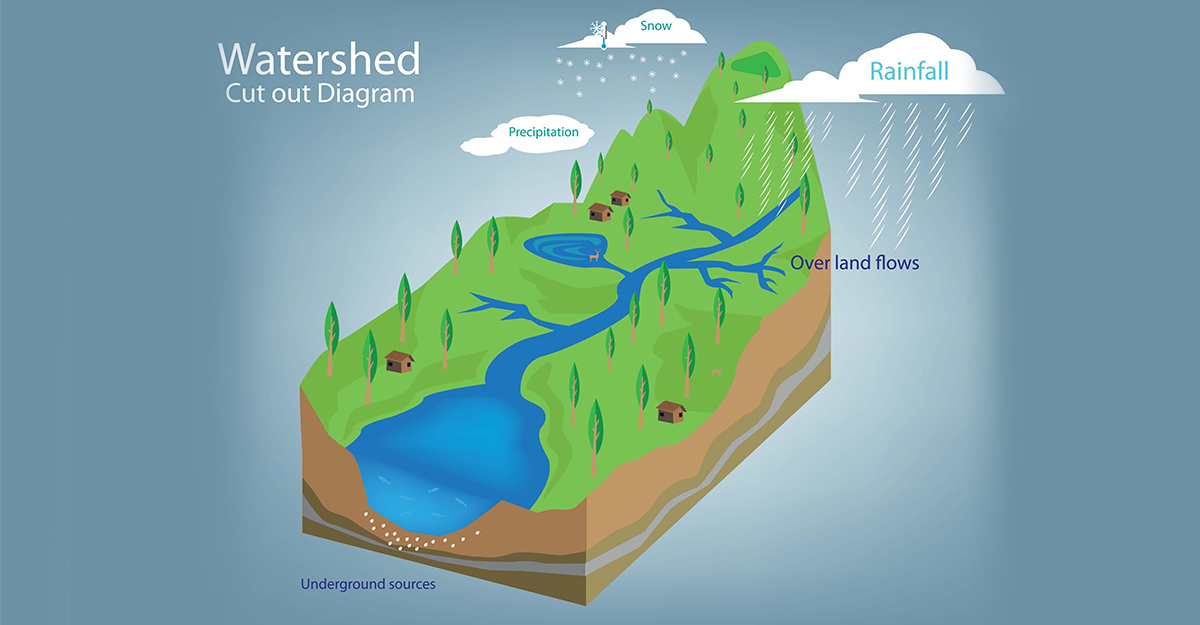The Greater Lansing Area lies within the Upper Grand River Watershed which includes three smaller watershed areas: the Grand River Watershed, the Looking Glass River Watershed, and the Red Cedar River Watershed. When it rains, some of the water soaks into the soil and some evaporates into the air, but most of it runs over the land joining small streams and wetlands that drain into lakes and rivers, and eventually flow into the Great Lakes.
The stormwater runoff from our local region eventually drains into Lake Michigan at the mouth of the Grand River in the town of Grand Haven. Because of this connection, our actions at home have a direct impact on our local environment and the health of the Great Lakes! We can prevent trash, chemicals, and bacteria from impacting our communities by taking steps to protect our watershed.
Tips for Watershed Protection
Conserve Water: Always conserve and reuse water wisely. Capture and reuse rainwater to control stormwater runoff.
Dispose of Waste Properly: Wash your car at a commercial facility to avoid detergents flowing into the watershed. Dispose of pet waste in the trash or toilet. If you have an onsite septic system, make sure it is maintained. Properly recycle household chemicals like motor oil, cleaners, and paint. Finally, maintain your vehicles to eliminate leaks.
Garden Wisely: Soil test before you apply fertilizers and use low or no-phosphorus fertilizers. Use native vegetation and reduce turf grass by increasing native wildflowers and grasses.
Get Involved: Join a local watershed organization! Learn more about how Delhi Township is managing stormwater runoff and helping to protect our watersheds.


